We interviewed interior designers Ala Zreigat and Óscar Engroba, creators of the award-winning Astet Studio, to find out why hotels and restaurants should become holistic spaces.
They met while working in a design studio and quickly discovered that they shared the same vision of interior design: that it should tell a coherent story that generates a sustainable discourse.
Their Barcelona-based company keeps winning international awards, such as the World’s Best Designed Restaurant in 2021 for Leña Marbella and in 2022 they won again for the Smoked Room design in the Small Space category, both awards are from the Restaurant & Bar Design Awards .
We spoke to them to discover the secret of their success.
Horse: What is the origin of the name Astet?
Óscar Engroba (O. E.): It is a play on words that derives from “aesthete” but we also imagine how this word would be said in other languages, as we speak many languages in the studio.
Ala Zreigat (A. Z.): We didn’t want to put only our surnames because we are a team of twenty people. Here we do everything in-house, we have rendering artists, draftsmen, product designers, art curators…. The energy we put into each project comes from the whole team.
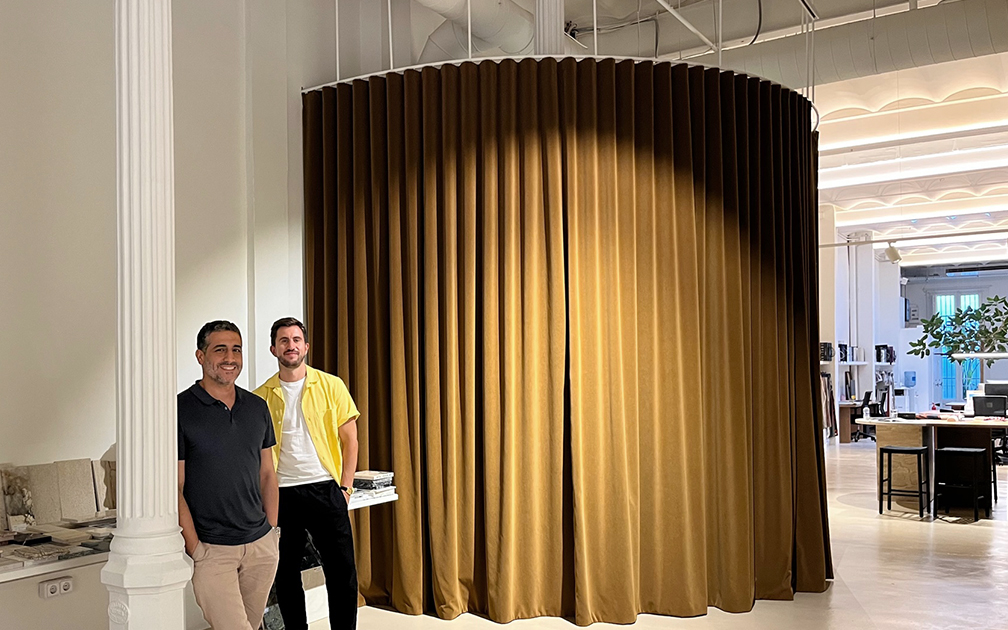
Horse: You have said that the essence of your work lies in authenticity. How do you define this concept?
E.: Authenticity means creating something unique for each client and giving each space its own personality. It is important to converse and not impose.
Z.: You have to have a fluid communication with the client from the beginning. In addition, we try to build a story or a narrative for each project and that this is the guide for the design.
Authenticity means creating something unique for each client and giving each space its own personality.
Spaces linked to an experience
Horse: How do you ensure that a space generates inspiration and invites people to come back?
E.: The concept of “experience” is very important to us. In a restaurant or hotel you have little time to interact with the space and, therefore, we seek to generate moments that can be remembered afterwards. For that, it is very important that a space is not only beautiful, but that it also creates something emotional, that it is holistic.

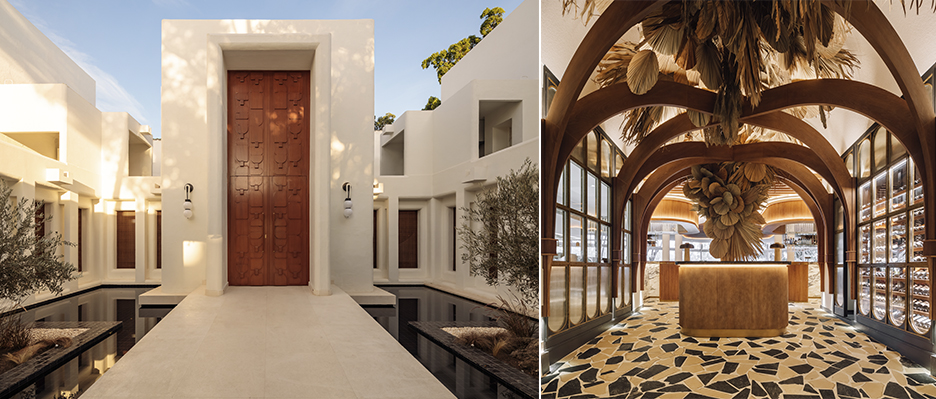
Nota Blu Restaurant is one of the latest projects of Astet Studio in Marbella. Photos: Francisco Nogueira
Horse: But don’t lose sight of the functionality?
E.: Exactly, it is essential that it is functional. Aesthetics and functionality have to have a balance because in the end one will compensate for the other. We also design specific pieces of furniture and lighting for each project. We always have a concept that gives coherence to everything.
Sustainability in design
Horse: Let’s talk about sustainability. Do you use reused or recycled materials?
E.: We are integrating them little by little, but it is very difficult for clients to understand the value of sustainable materials. Nowadays, immediacy rules, and sustainability goes against time because some products and materials need time to develop. Few customers understand and value the cost of fabrics such as pineapple leather.
As designers, we are integrating sustainability
little by little, we believe it is our responsibility
to educate and convince the customer to pay a little more for sustainable materials.
a little more for sustainable materials
Z.: It’s funny because sometimes customers can pay 20,000 euros for a sofa, but they don’t want to pay more for a material that is organic or ecological. As designers, I think it’s our responsibility to educate and convince the customer to pay a little bit more for sustainable materials.
Horse: Do you like to research new fabrics? Give us an example.
E.: We love it. We designed the ceiling of the Roostiq restaurant with ponespol, which is a polyethylene material that allows us to play with the idea of fire. I think a lot of projects stay at a horizontal point and only explore the visual level, but the ceiling and the floor have a big influence on the perception of a space.
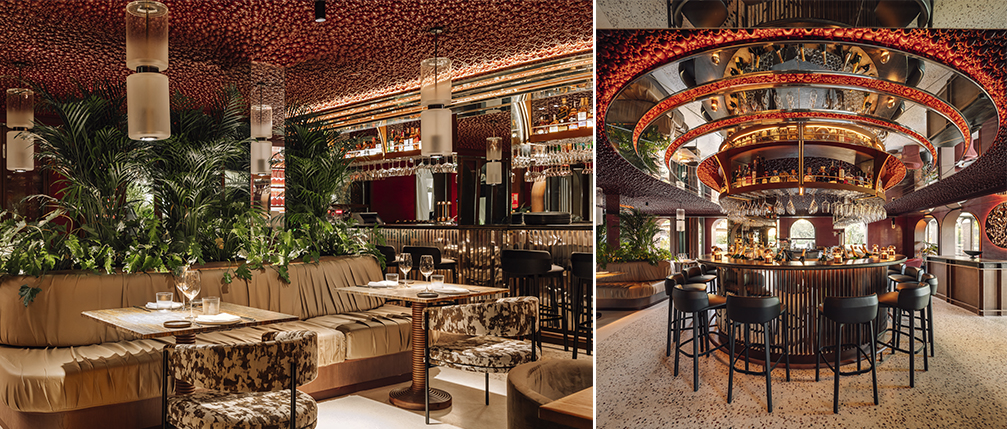
The roof of the Roostiq Restaurant in Marbella is covered with panespol, a totally biodegradable raw material. Photos: Francisco Noguera
Z.: We also do 3D printing and sometimes we design carpets, ceiling carpets… it’s a 360º project.
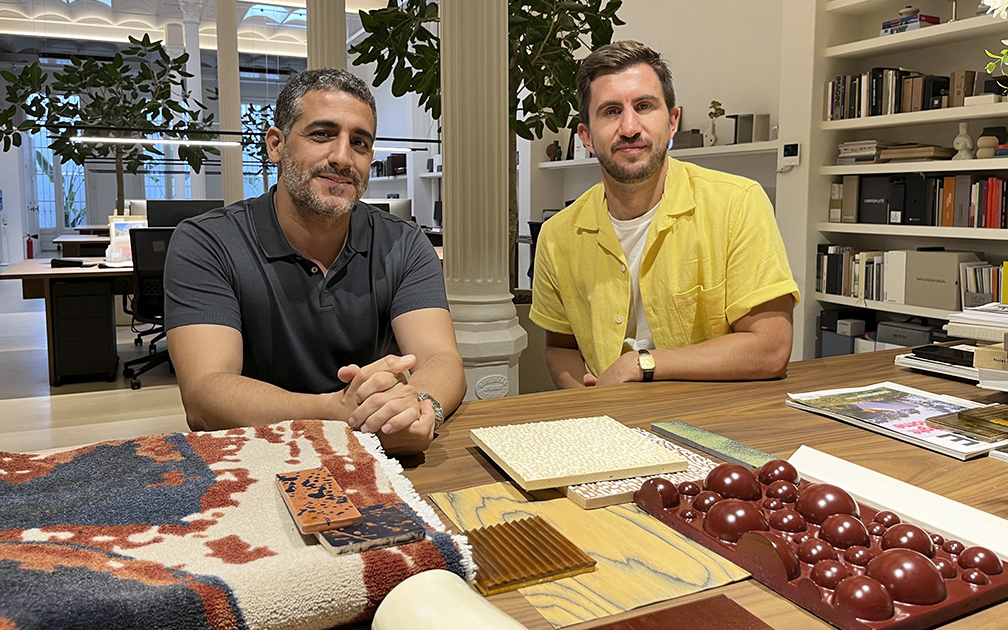
Ala and Oscar in their studio in Barcelona, with different materials they design ranging from glass textures, carpets, ceilings…
Horse: In the short film ‘Dining On Design’, Dani García says that “some restaurants are more successful because of the interior design than because of the food”. Do you think that the design of a restaurant can affect the way diners perceive the dishes?
E.: It is essential that everything in a restaurant is coherent. If you have a delicious dish but the lighting is too white, there is too much noise or the menu design is not right… in the end you can’t enjoy the dish.
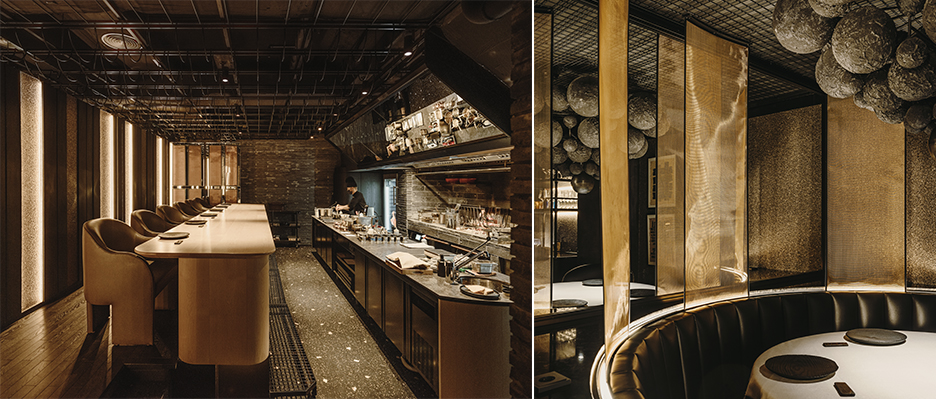
Smoked Room by Dani Garcia’s chef has been recognized by the Restaurant & Bar Design Awards 2022 as the smallest and most beautiful restaurant in the world. Photo: Salva López
Z.: Sometimes you don’t know how to explain why you didn’t like a restaurant, but there are many sensations that remain on a subconscious level. That’s why we also like to take part in the process of selecting the tableware, the waiters’ uniforms, the graphic design… so that everything has continuity and coherence.
Future projects
Horse: Now you are going to make the leap to the Middle East with the opening of Leña Dubai. What story will this new restaurant tell?
Z.: We are very happy with this project that opens in September, because we have always wanted to work in the Middle East. It is a very interesting market which, moreover, dominates hospitality like no other, it is in its DNA. Leña is a very cosmopolitan, elegant and sophisticated concept that fits perfectly with Dubai. But, unlike in Spain, it will be more nocturnal and will have a large terrace.
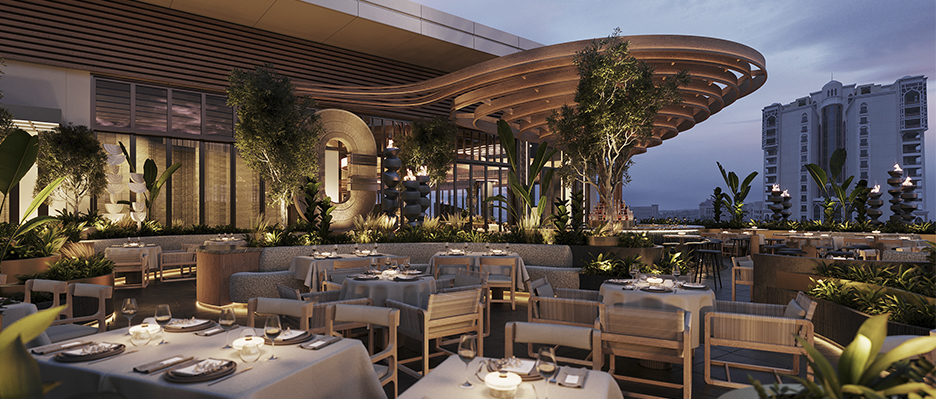
Terrace of the Leña restaurant in Dubai that will open in September. Render image
Horse: What other projects are you working on right now?
Z.: Right now we are working on Leña Miami. Also restaurants in Budapest, Malta, Bucharest, Oslo, Dominican Republic, Monterosa and Lisbon. We have always wanted to be an international studio.

Another project is being developed in the Dominican Republic for the international chef Makoto Okuwa.
In the future, I would also like to work on the interior design of a train, a yacht or a nightclub. To do something different.
All clients have the same needs, but the interesting thing is to come up with unfamiliar solutions to the same old problems.
Horse: What is the most special project you have done so far?
Z.: Our first project, the Aethos Ericeira Hotel, is very special to me. It was our first project and, in fact, we created the studio because of it, so it has a sentimental point. And then there is Leña Marbella, with which we won the prize for the most beautiful restaurant in the world.
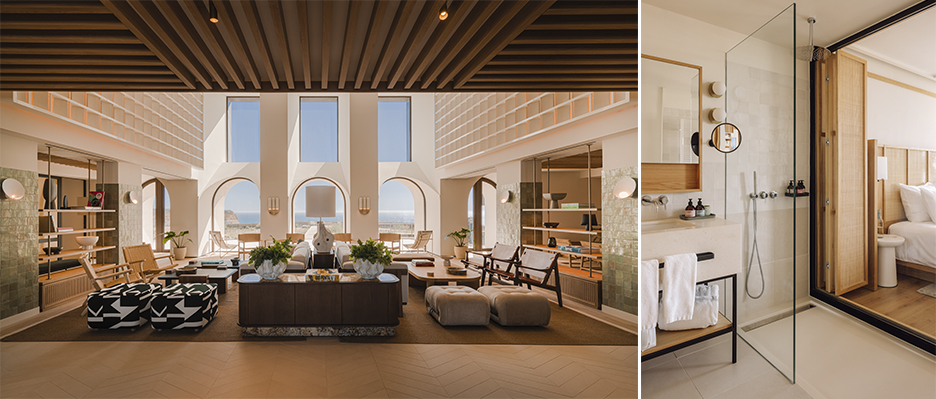
Images of Hotel Aethos Ericeira, a boutique hotel in Portugal with panoramic ocean views. Photo Francisco Nogueira and Pion
E.: For me, Leña Marbella is the project that encompasses everything, which is super coherent.

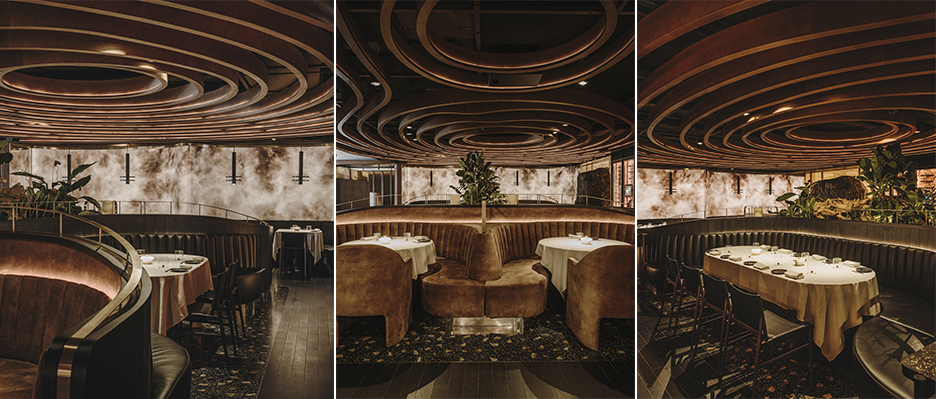
Leña Marbella Restaurant. Photo: Francisco Nogueira
Horse: You have said that disruption, in furniture and interior design, is going to be a trend of the future. Could you tell us a bit more about this trend?
Z.: All clients have the same needs, but the interesting thing is to propose original solutions to the same old problems. Altering expectations to avoid common solutions. I think you have to invest in good designers because a beautiful property gives better results: if it looks better, it works better. So, if you want a successful business, you have to have a well-designed and unique project with a story.
Aesthetics and functionality have to have a balance because in the end one will compensate for the other.
Rather than chasing fashionable interior and design trends, Astet Studo’s projects combine aesthetic and functional ideas to enhance the human experience in a given space. Their careful attention to detail and commitment to durability in all their projects have made them a benchmark studio that will soon be conquering restaurants, homes and hotels all over the world. In fact, we are sure that many of these new projects will receive important international recognition and awards in the future.





